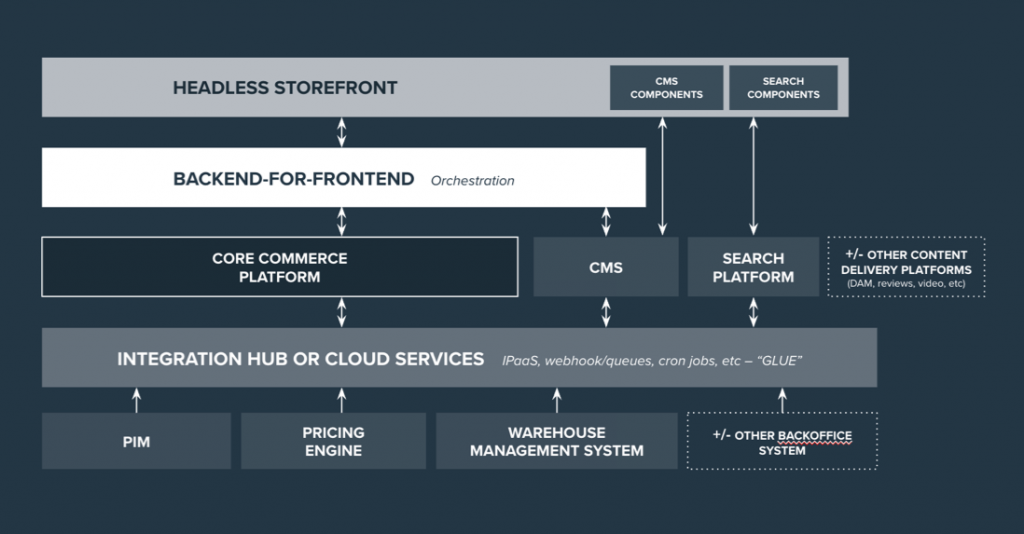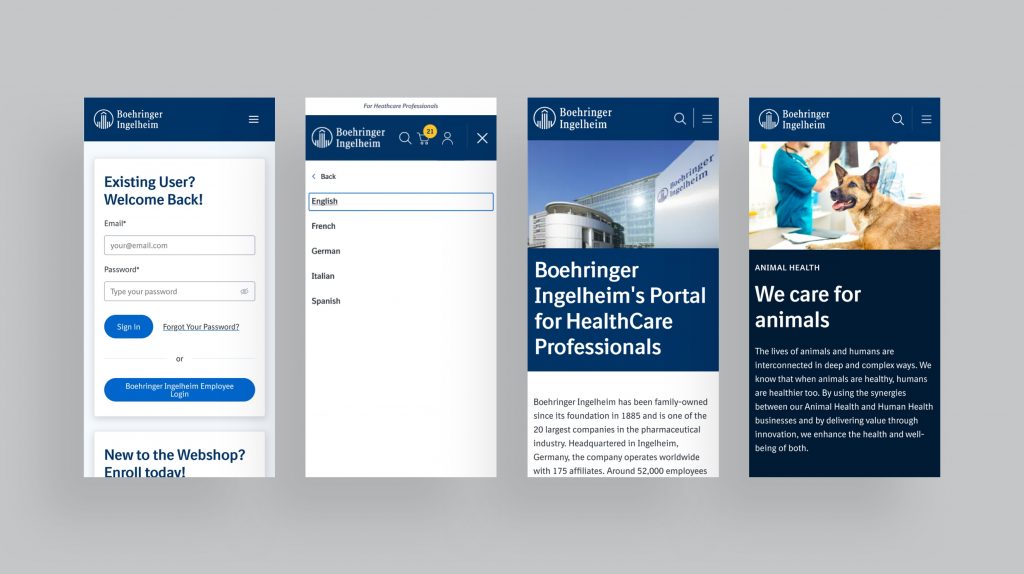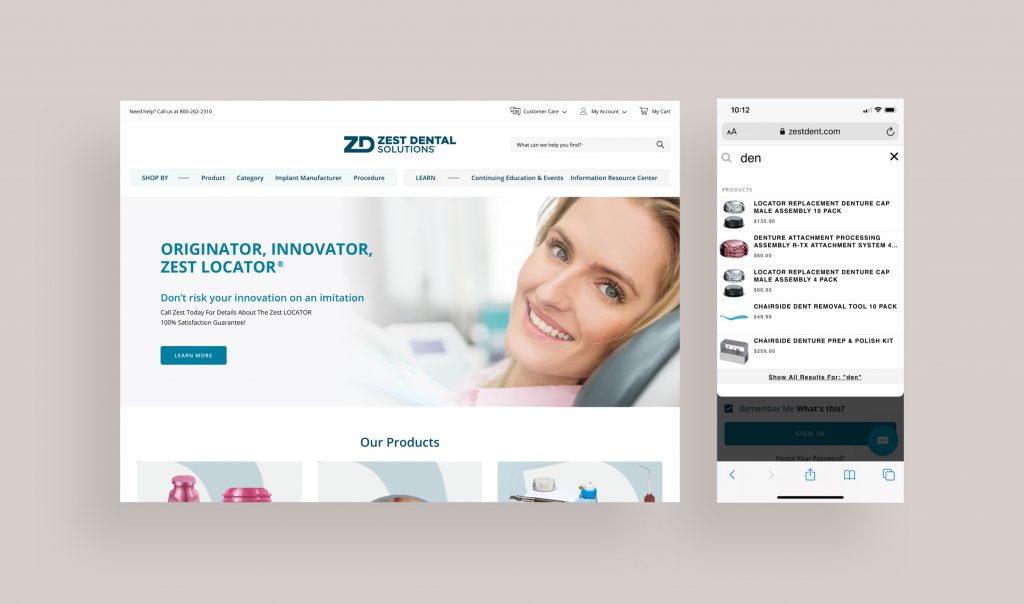Adobe Commerce is the Past, Present, and Future of B2B Commerce
5 Min Read


The era of users having different expectations for D2C and B2B experiences is over. Now, customers expect B2B implementations to not only have good-looking and highly functional UX experiences, but they also want technical capabilities and feature-rich websites.
For brands looking to modernize their B2B offering, or maybe use a B2B commerce solution as an on-ramp towards a future D2C channel, there are many choices for a commerce platform, but there is a best choice.
Adobe Commerce is the global industry leader in ecommerce because they have a decades long track record of delivering high end experiences. Read on to learn five reasons why Adobe Commerce is the best platform for a B2B implementation.
Proven and Digitally Mature
Adobe is the gold standard in the ecommerce industry for platform choice because it has been used and tested by every type of business, from startups to enterprise, to first-time transactional commerce solutions. Whatever developer team or solutions integrator is implementing on Adobe Commerce will be familiar with the platform and multiple use cases that may arise.
Vendors and creators of third-party extensions are creating their software and products to be natively compatible with Adobe Commerce because of Adobe Commerce’s track record and industry position. It is paramount that commerce product products make their products compatible with Adobe, which sets up Adobe users as participants in the vanguard of technology.
Infinitely Extensible
One of the separators between B2B and D2C commerce is business needs. D2C commerce, while a very vital and differentiated market, has traditional expectations and business needs that most, if not all, brands will subscribe to. Because of this, platforms can be more normalized because brands have similar expectations and problems to solve.
B2B is a different beast. Because B2B brands have so much variance in what they sell, how they sell, and who they sell to, it is difficult for a platform to have standardized features that will work for most B2B brands.
This isn’t a problem for an Adobe Commerce user though, because Adobe Commerce offers nearly infinite extensibility allowing customization on an unparalleled scale to any component in the solution. With a SaaS solution, a separate application will have to be built and then individually hosted for a B2B brand’s specific needs to be fulfilled. With this separate hosting and individually built component, there will have to be lots of quality testing and work done to make sure that this separately hosted program doesn’t break the solution.
This won’t be an issue for Adobe Commerce because of its extensibility parameters. Any program or component that needs to be added for a B2B brand can be done seamlessly, without separate hosting or deployment.


Natively Headless
Headless commerce is an ecommerce architecture where the frontend is decoupled from the backend, with an API enabling communication between the two. This architecture offers brands freedom of expression to build whatever they want. Most importantly, it creates an enriched customer experience.
Adobe Commerce natively supplies users with a headless solution that offers myriad benefits in user experience and scalability of the commerce solution. Adobe Commerce is a modern solution that updates its architecture modules regularly so as to offer users the latest in platform technology. Currently, Adobe Commerce utilizes a GraphQL API to help facilitate customer interactions across multiple channels while also deploying an API mesh that consolidates multiple API endpoints to consolidate development and speed up time-to-market. Adobe Commerce has a modular, open architecture allowing extension of commerce capabilities in a scalable environment. All in all, Adobe Commerce is a modern commerce package that has all the best-in-breed components expected from a modern solution.
Headless also allows for the frontend, the user-facing part of the solution, to be used in nearly any capacity. Let’s say a B2B brand is at a trade show—by using a natively headless solution they can have their transactional website, or a catalog of their products, easily accessible on a tablet or kiosk screen so that their products are shoppable anywhere.


Another beneficial use case of a headless system is for the workers at a B2B brand. Say someone’s safety goggles break—a headless system would allow the brand to have retail kiosks in their workplaces for employees to purchase an item they might need while they’re at work.
The possibilities that open up from a headless solution are numerous and mind-expanding.
Adobe Commerce being natively headless lowers the cost to access these amazing possibilities and gives brands access to the future of commerce out-of-the-box.
Built-In B2B Functionality
Because B2B brands often have such specific needs, like complex interactions between buyer portals an user permissions, a fully integrated system for quotes and requisitions, and user-based tiered pricing, B2B brands often implement fully bespoke solutions. While this offers benefits, it is also resource-intensive and prone to issues.
Adobe, the industry leader in platforms, offers a dedicated B2B offering with Adobe Commerce that comes fully equipped with all standardized needs for B2B brands like out-of-the-box buyer portals and fully built out quote and requisition flows, that make Adobe Commerce the go-to choice for transactional B2B sites.
If a brand does need a component or functionality that isn’t natively offered by Adobe Commerce, as mentioned above, the platform is infinitely extensible meaning that whatever a client needs can be seamlessly integrated into Adobe Commerce making this new functionality perform as if it was a native feature. Adobe Commerce has everything you might need natively and as a backup plan, the platform is able to expand to solve any problem that isn’t proactively solved out-of-the-box.
D2C-Style User Experience
There used to be an adage that D2C brands looked and performed better than their B2B counterparts. That is no longer the case. Users in 2023 expect every touchpoint to operate at the highest level. No longer will a drab grid system work for any commerce solution, B2B included.


By choosing Adobe Commerce brands receive access to the massive library of components and expertise that are behind the best-looking and most state-of-the-art D2C commerce solutions in the world. This same technology and high-level user experience can be used for B2B solutions giving customers top-level functionality and user experience no matter what they’re shopping for.

